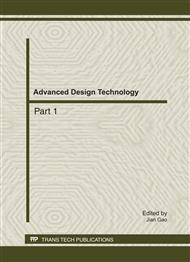p.1910
p.1914
p.1918
p.1923
p.1929
p.1935
p.1941
p.1946
p.1951
Research on Dual-Cones CVT Based on EHL
Abstract:
A novel configuration of CVT that contains two cones located in the same shaft face to face is researched about the traction performance under high speed based on the theory of elastohydrodynamic lubrication(EHL). The effects of load, radii of curvature and slip-roll ratio on the traction characteristics and power transmission are analyzed. The results show that with increasing load the traction coefficient enhances close to linearly where the load is not heavy and the minimum film thickness decreases linearly when the inner wheel radii of curvature less than 0.085m. The leftmost position could transmit higher power. The power transmitted improves slightly as slip-roll ratio enhances in an appropriate range.
Info:
Periodical:
Pages:
1929-1934
Citation:
Online since:
August 2011
Authors:
Keywords:
Price:
Сopyright:
© 2011 Trans Tech Publications Ltd. All Rights Reserved
Share:
Citation:


